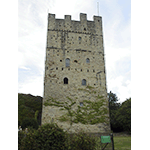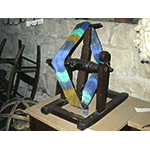Museo del Castello di Porciano [Porciano Castle Museum]
The Castle of Porciano, built around the year One Thousand, was in all probability one of the first residences of the Counts of Guidi, as appears to be the case from a document dated 1017 which names a certain Count Guido di Teudegrimo, who may have been the founder of this branch of the Counts of Porciano. Having placed itself, through a deed dated 1349, under the protection of the Commune of Florence, the castle passed definitively under the dominion of the Florentine Signoria in 1444. After numerous vicissitudes it was bought by Count Giuseppe Goretti de'Flamini in the 18th century, and has since then remained the property of his family. Restoration of the castle, begun in 1963 by George A. Specht and his wife Flaminia Goretti de' Flamini, the parents of the current owner, has led to the salvaging of six residential floors. At present the three lower floors of the castle house house a small private museum, opened to the public in 1978. Among its collections are numerous ceramic objects dating from the 14th to the 18th century, found during excavation of the Tower, and a collection of articles for domestic use and tools for farming and pasturage linked to the peasant culture of the Casentino in past centuries. It is surprising to find a section of nineteenth-century craftsmen's objects from the Sioux Indians of North Dakota, brought to Italy by George A. Specht. Outstanding among these, for its naturalistic interest, is a walking stick carved from a branch of the Diamond Willow, a North American species of willow tree that, when soaked in an acid solution, reveals an inner lozenge-patterned structure.
****************************
Texts by Elena Fani
English translation by Catherine Frost
Last update 26/mar/2008





